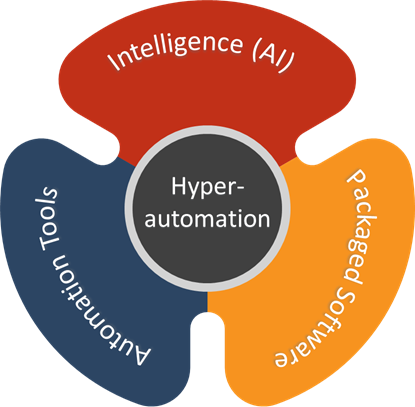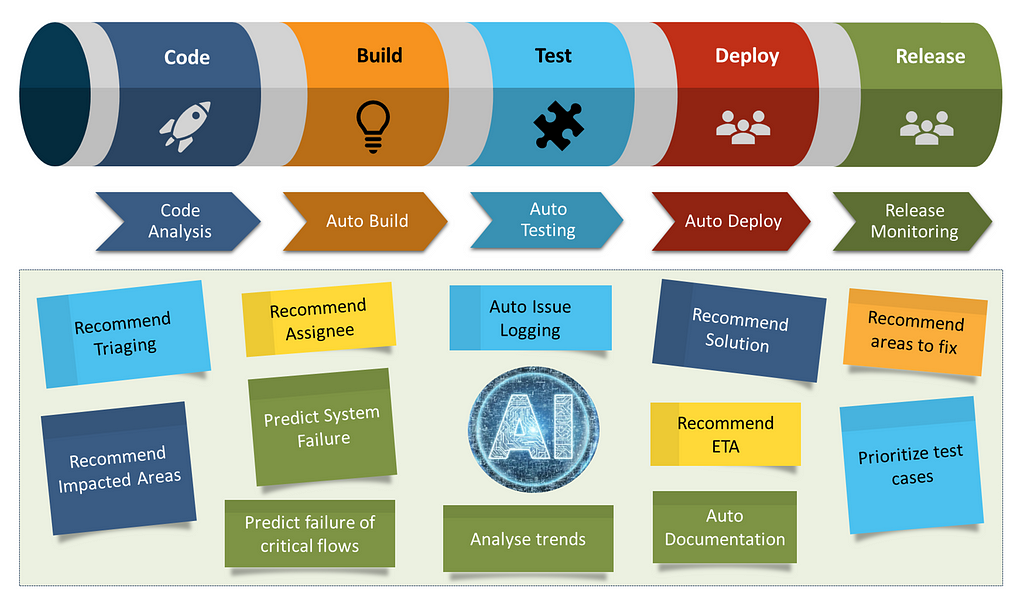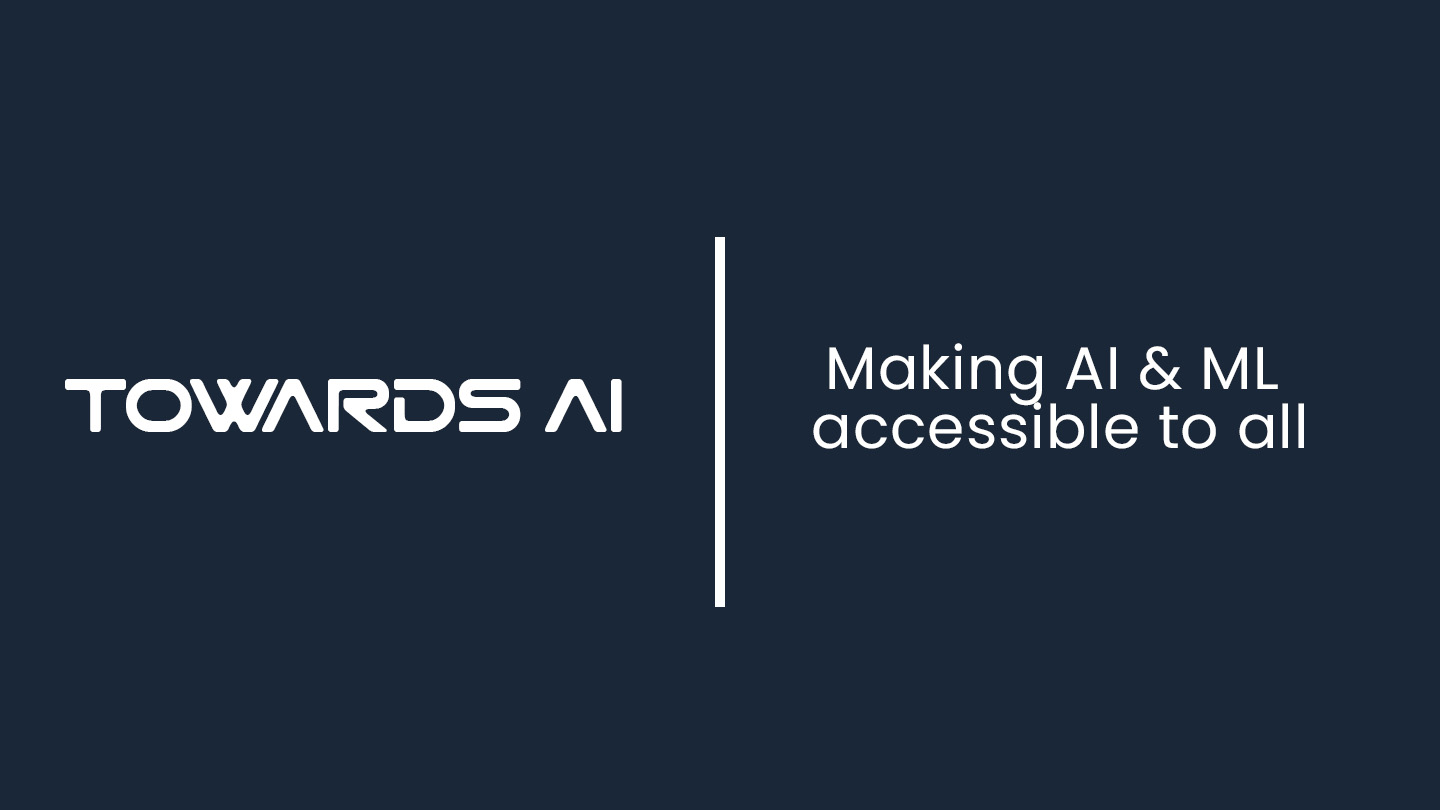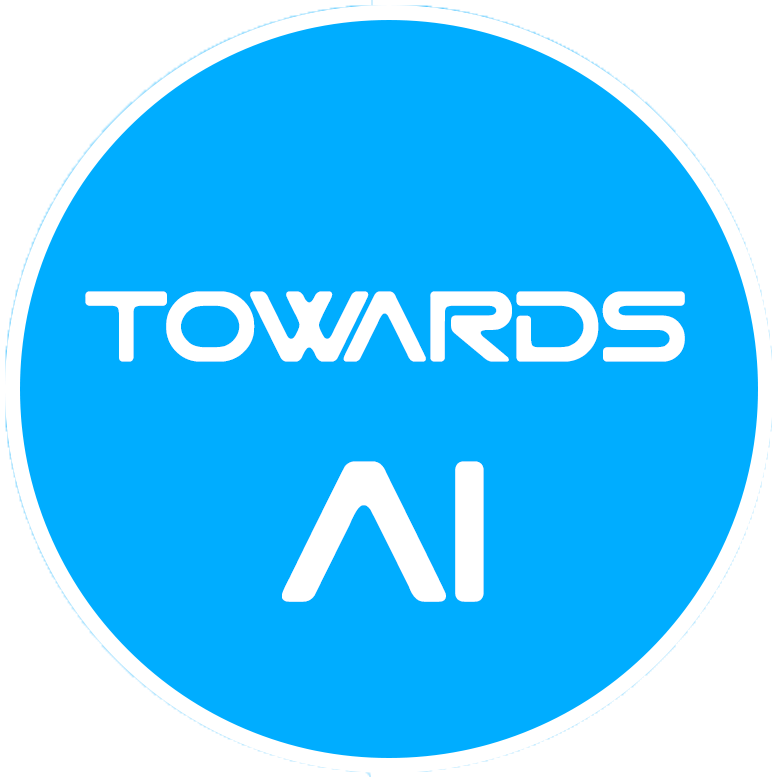
Hyperautomation — New Age Automation with AI
Last Updated on February 23, 2022 by Editorial Team
Author(s): Amit Gupta
Originally published on Towards AI the World’s Leading AI and Technology News and Media Company. If you are building an AI-related product or service, we invite you to consider becoming an AI sponsor. At Towards AI, we help scale AI and technology startups. Let us help you unleash your technology to the masses.
Artificial Intelligence
Hyperautomation — New Age Automation with AI
Improving product engineering processes for faster delivery

Active minds look to obviate monotony. This is the seed of the greatest ideas that have ever transpired. Ideas that lead to progress, growth, and freedom from doing things manually. Over the past several decade advancements in technology has given us the greatest gift of all, time. Time to focus on our creative endeavors and leave it to the machines to carry out the tasks that our brains now consider mundane. As a species, it is our constant endeavor to make our lives easier and more convenient.
While the core meaning of “automation” remains the same, the usage of the word has truly changed over time. We have come a long way from manually switching on the ceiling fan to automatic temperature control in air conditioners everywhere. Things that we perceived as “automated” years ago, kept getting more and more automated and became more convenient to use. This is largely due to advancements in technology over the years. We never thought years ago that someday we could place shopping orders through an automatic speech recognition device like Alexa just by telling it so, make instant payments through wearable devices or use self-driving cars. Automation has given us a new sense of freedom. Freedom to choose how we spend our time and what we work on. This in turn leads to more advancements in everything we do or want to do.
Meet Hyperautomation
Gartner introduced “Hyperautomation” as one of the top strategic trends recently. It is implied that anything that can be automated today, should be. It is about using multiple tools and technologies to automate end-to-end business processes and operations than mere task-level automation. Quite often there is some level of human-level decision-making involved in any process. Hyperautomation aims at reducing human intervention in a business process and automating it entirely to optimize efficiency and productivity. The most essential ingredients to intelligent process automation are Artificial Intelligence(AI), Robotics Process Automation (RPA), Internet of Things (IoT), and Business Process Management (BPM).
Most organizations focus on developing a culture of automation. A culture in which it is encouraged to automate anything that is done manually today. A new mindset that anything that has to be done frequently is not worth doing manually. Brainstorming and investing time and effort to automate it. There is no dearth of tools to automate specific tasks and it often results in increased productivity. Users are able to achieve most things with a simple click of a button facilitated through an interface. Automating various tasks in a system creates automated systems while automating an entire set of processes creates autonomous systems that require no human intervention and operate on their own. The journey of transforming automated systems into autonomous systems is referred to as hyper-automation.
Role of AI in Hyperautomation
AI has provided the right impetus to the whole process of automation. It is effectively used to mimic human decision-making at a reasonable level of accuracy. Natural Language Processing (NLP), Computer Vision, and ML algorithms are often combined with OCR, RPA, etc. to create digital workers that can see, read and process information from images, videos, documents and perform the desired work. The advancement in AI over the last few years has truly helped to unlock tremendous automation opportunities. Hence AI is considered quintessential to achieving hyper-automation.

Hyperautomation in Product Engineering
Hyperautomation is getting rapidly adopted by a breadth of industries. The software industry harnesses the power of hyper-automation in multiple ways. Many product engineering teams are focused on automating the entire build pipeline to compile, deploy and test the code without any human intervention. Security testing, performance benchmarking, scheduled automated deployment are also integrated. This is not new to most organizations but there is so much more that can be done in today’s context.

Decision-making is inherent in any software development process. These decisions are mostly dependent upon human experience and intuition. Developers, managers, testers collaborate to take multiple decisions to manage the risk to delivery. One must have a good context and understanding of various constraints related to resource availability, skills, cost, time to delivery, and stakeholder needs. In order to embark on a journey to automate decision making it requires the use of AI with access to data pertaining to decisions made in the past.
At every stage of a “DevOps pipeline,” a huge amount of data is generated recurrently. Multiple codes builds are done every day. Multiple test cycles are performed. Test cases are executed (manually or automated) and bugs are logged respectively with relevant details. Developers fix the bugs/defects and contribute more data on defect fixing. This data can be stored and used later to train multiple AI models.
AI models can be trained to potentially augment human decision-making at first. Eventually, accurate AI models will start prescribing solutions to common problems that have occurred in the past. They can recommend what defects to be fixed first and by whom. Start estimating the effort required for fixing defects. Recommend areas that need urgent attention due to high defect density. They can recommend and prioritize test cases to be executed by the automation testing suite depending upon the impact of the changed code. Recommend areas to be refactored where security needs to be strengthened or identify possible performance bottlenecks.
AI models can even be used to analyze post-deployment trends to monitor how the system behaves and raise alarms if required. They can predict when will the critical functionalities in the system start underperforming. They can provide information on important business flows depending upon how frequently they are used by the end-users. They can even create necessary documentation related to the system. In the software industry, most of the above has consumed a lot of manual efforts in the past several decades. It only makes sense to automate what can be automated considering the constraints of a project.
The next stage of the hyper-automation journey in the context of software development would surely be to make more autonomous systems that are self-healing, self-monitored, self-tested, self-deployed, self-documented but more importantly, self-evolving.
Forethought
Out of the many possible futures, the one with hyper automation is inevitable. The “hyper-speed” of technology advancement creates more opportunities to “hyper-automate”. We can be more creative and innovate new ways to automate. One might wonder what is the final destination of a hyper-automation journey? When should it end? When should we assume things to be fully automated without any scope of further automation?
My best guess is — never…
Hyperautomation — New Age Automation with AI was originally published in Towards AI on Medium, where people are continuing the conversation by highlighting and responding to this story.
Join thousands of data leaders on the AI newsletter. It’s free, we don’t spam, and we never share your email address. Keep up to date with the latest work in AI. From research to projects and ideas. If you are building an AI startup, an AI-related product, or a service, we invite you to consider becoming a sponsor.
Published via Towards AI














